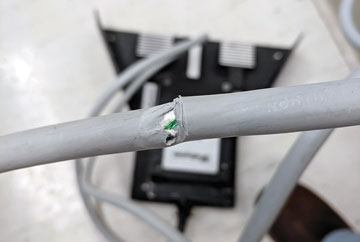"The OR is on fire!"
Did we get your attention? Approximately 500 surgical fires occur every year in the U.S., says Daniel B. Jones, MD, MS, FACS, a professor of surgery at Harvard Medical School who practices at Beth Israel Deaconess Medical Center in Boston. "Accidental thermal burns and OR fires can cause disfigurement and life-threatening injuries," he says.
Fire is just one of numerous safety concerns surrounding the use of electrosurgery instruments, venerable tools whose power and corresponding danger is not always fully understood or appreciated by surgeons, nurses, anesthesiologists and techs. Near-misses attributable to electrosurgery instruments go unreported, says Dr. Jones. Why? "You catch them early enough," he explains. "Someone takes a laparoscope, points it at the drapes for a few seconds, and poof, there's a fire. You pat it out, you look down at the drapes, there's a hole, you put a piece of plastic on it to cover it up and no one ever gets around to reporting it."
Tom Robinson, MD, chief of surgery at Rocky Mountain Regional VA Medical Center in Aurora, Colo., once was part of a team that examined 6,000 reported electrosurgery injuries. They found laparoscopic surgeries particularly perilous. "When the shaft of a laparoscopic instrument is laying against the bowel inside the abdomen, even though the tip of the instrument is involved in the dissection, energy can escape through the insulation and burn the tissue," he says. "Activating the tip of the instrument too close to vulnerable tissue can also cause harm. If you're too close to the ureter, for example, and you activate the energy, it heats up the tissue and burns it. That's a direct application injury."
The most common risk is associated with damaged or incorrectly handled electrosurgery instruments, which can burn through a patient's bowel to cause leaks, sepsis, ICU stays and even death. These burns can occur when insulation in the instrument's shaft has a breach — because of mishandling, or simply the result of the instrument being reprocessed many times over — the surgeon doesn't know about. These breaches can spread stray energy to areas of the patient the surgeon isn't even looking at.
"We call them perforations and leaks, but we forget they were probably caused by our energy settings, the energy we were using or just how we manipulate our instruments," says Dr. Jones.
.svg?sfvrsn=be606e78_3)


.svg?sfvrsn=56b2f850_5)